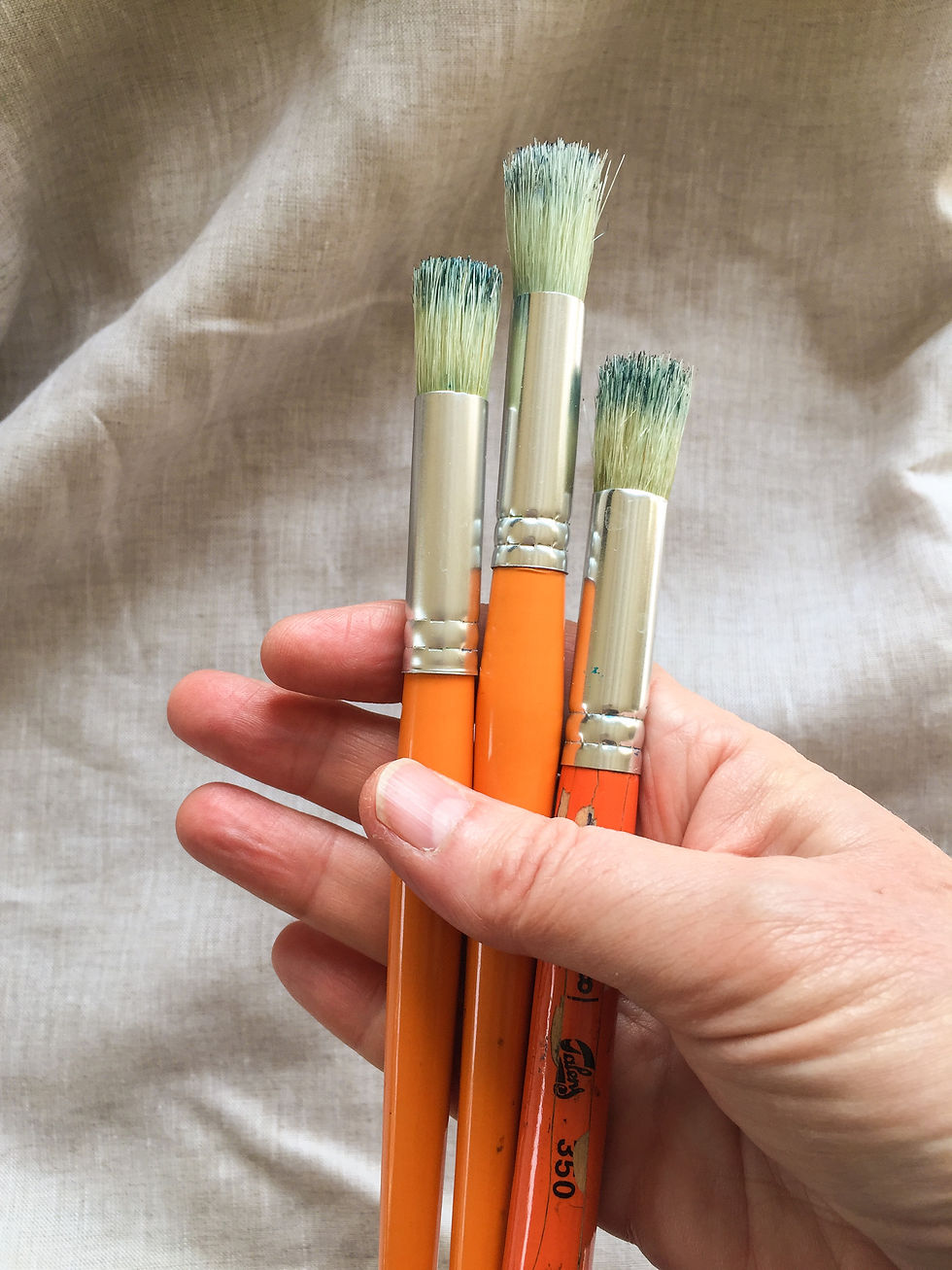When I first started my blog, I made a blogpost about the materials I use in stencil printing. In this post and in the video below, I want to give some more information about brushes for stencil printing as finding the right brushes is not always easy and getting the wrong ones can be very frustrating especially when you are learning.

In the techniques that I use I both tap and brush the ink into the fabric and I alternate in having a normal amount of ink on my brush with having an almost dry brush. To be able to make prints with all the different techniques that I use and teach and get beautiful crisp prints you want a brush that can accommodate all that. Most brushes are made of pig hair or boar hair (although I have seen an occasional acrylic one), but the quality can be very different. In the video, I’ve tried to show you what to look for in a brush, as seeing the difference can be difficult when you don’t know what you are looking for.
An ideal brush will have:
- A long handle, this will give you control over your movements and prints
- Bristles or hairs that are tightly set into the ferrule (the metal part of the brush)
- All the bristles need to be exactly the same length, the brush needs to have a perfectly flat end.
- The bristles need to be bouncy not too soft, stiff but not hard.
- The ferrule needs to be attached well to the handle. In some cases, especially with cheaper brushes pins often come loose and the ferrule can start rattling as you tap.
- Not important for your prints, but preferable for your hands is to have a ferrule without a ridge, this can hurt your hands when printing for long times on end.
Even when you have a really good brush you may notice after printing for a long stretch that the brush becomes harder to print with as it is getting saturated with ink. At first, you’ll be able to squeeze out the excess ink, but eventually the bristles will get too soft and lose their bounce. I therefore always recommend having extra brushes when working on a project, so that you can always switch to a fresh brush.
When you have washed your brush, it will need to dry overnight before you can print with it again.
Hope you will find your perfect brushes and if you have any questions do not hesitate to ask.
I have also published a blog on choosing fabric ink for screenprinting, you can find it here.

Comments